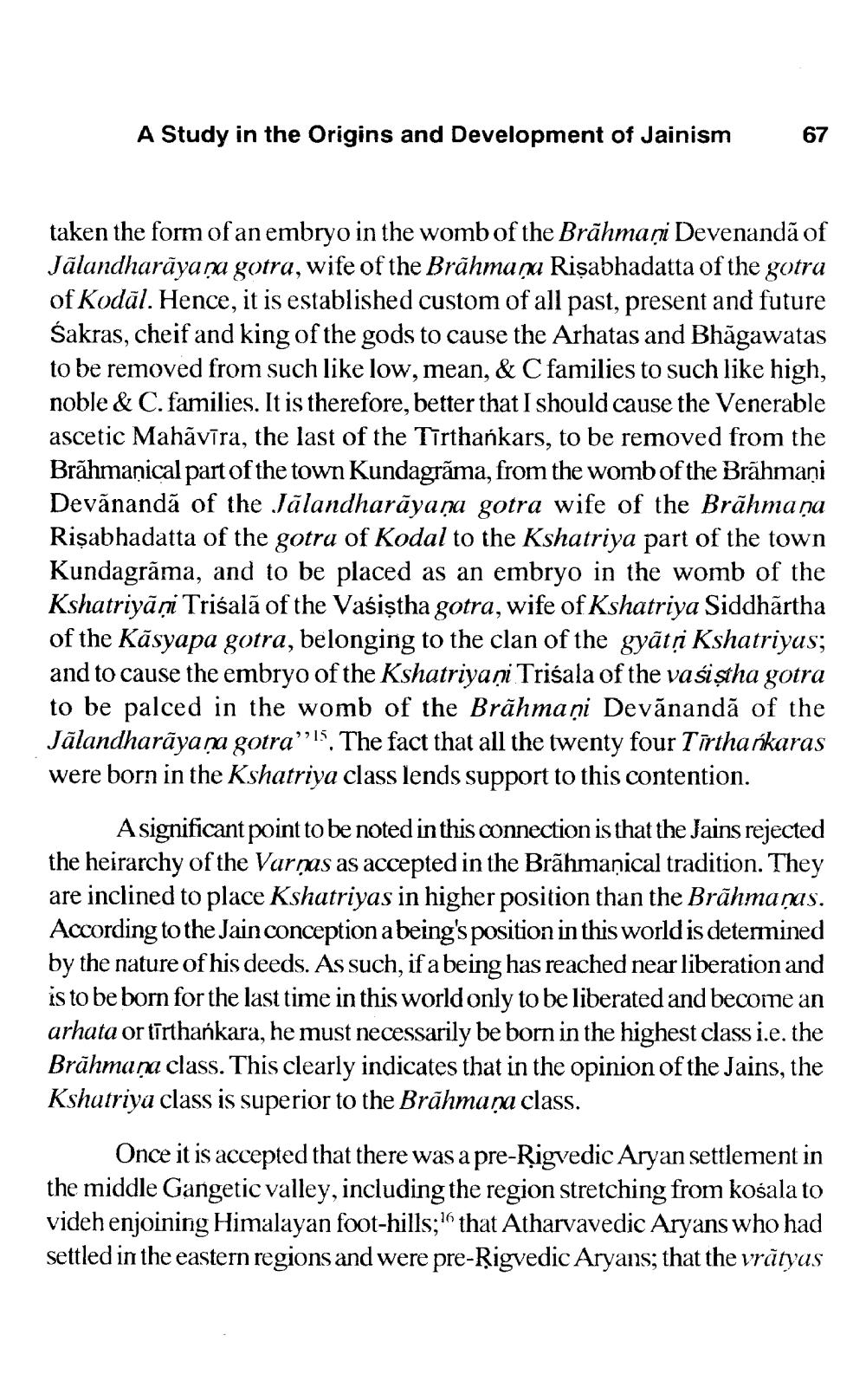________________
A Study in the Origins and Development of Jainism
67
taken the form of an embryo in the womb of the Brāhmaṇi Devenandã of Jālandharāyaṇa gotra, wife of the Brāhmaṇa Risabhadatta of the gotra of Kodāl. Hence, it is established custom of all past, present and future Śakras, cheif and king of the gods to cause the Arhatas and Bhăgawatas to be removed from such like low, mean, & C families to such like high, noble & C.families. It is therefore, better that I should cause the Venerable ascetic Mahāvīra, the last of the Tīrthankars, to be removed from the Brāhmaṇical part of the town Kundagrāma, from the womb of the Brāhmaṇi Devānandã of the Jalandharāyaṇa gotra wife of the Brāhmaņa Rişabhadatta of the gotra of Kodal to the Kshatriya part of the town Kundagrāma, and to be placed as an embryo in the womb of the Kshatriyā ņi Trisalā of the Vaśiştha gotra, wife of Kshatriya Siddhārtha of the Kõsyapa gotra, belonging to the clan of the gyātri Kshatriyas; and to cause the embryo of the Kshatriyani Trišala of the vasiştha gotra to be palced in the womb of the Brāhmaṇi Devānandă of the Jālandharāyaṇa gotra”:15. The fact that all the twenty four Tirthařkaras were born in the Kshatriya class lends support to this contention.
A significant point to be noted in this connection is that the Jains rejected the heirarchy of the Varsas as accepted in the Brāhmaṇical tradition. They are inclined to place Kshatriyas in higher position than the Brāhmaṇas. According to the Jain conception abeing's position in this world is determined by the nature of his deeds. As such, if a being has reached near liberation and is to be born for the last time in this world only to be liberated and become an arhata or tīrthankara, he must necessarily be born in the highest class i.e. the Brāhmaṇa class. This clearly indicates that in the opinion of the Jains, the Kshatriya class is superior to the Brāhmaṇa class.
Once it is accepted that there was a pre-Rigvedic Aryan settlement in the middle Gangetic valley, including the region stretching from kośala to videh enjoining Himalayan foot-hills; that Atharvavedic Aryans who had settled in the eastern regions and were pre-Rigvedic Aryans; that the vrátyus




